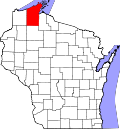2010 census
At the 2010 census there were 487 people in 261 households, including 130 families, in the city. The population density was 566.3 inhabitants per square mile (218.6/km2). There were 482 housing units at an average density of 560.5 per square mile (216.4/km2). The racial makeup of the city was 77.8% White, 0.2% African American, 14.8% Native American, 1.0% Asian, and 6.2% from two or more races. Hispanic or Latino of any race were 1.8%. [17]
Of the 261 households, 16.5% had children under the age of 18 living with them, 39.5% were married couples living together, 8.8% had a female householder with no husband present, 1.5% had a male householder with no wife present, and 50.2% were non-families. 44.1% of households were one person and 18.7% were one person aged 65 or older. The average household size was 1.87 and the average family size was 2.58.
The median age was 53.2 years. 15.4% of residents were under the age of 18; 3.2% were between the ages of 18 and 24; 18.6% were from 25 to 44; 36% were from 45 to 64; 26.9% were 65 or older. The gender makeup of the city was 48.9% male and 51.1% female.
2000 census
At the 2000 census there were 611 people in 289 households, including 167 families, in the city. The population density was 703.3 people per square mile (271.2/km2). There were 403 housing units at an average density of 463.8 per square mile (178.8/km2). The racial makeup of the city was 76.92% White, 0.65% Black or African American, 15.22% Native American, 1.31% from other races, and 5.89% from two or more races. Hispanic or Latino of any race were 0.49%. [18] 10.5% were of American, 10.1% German, 9.4% Norwegian, 8.1% Irish, 7.4% Swedish and 5.4% English ancestry according to Census 2000.
Of the 289 households, 22.8% had children under the age of 18 living with them, 41.2% were married couples living together, 11.4% had a female householder with no spouse present, and 41.9% were non-families. 35.6% of households were one person and 15.9% were one person aged 65 or older. The average household size was 2.10 and the average family size was 2.64.
The age distribution was 20.9% under the age of 18, 6.9% from 18 to 24, 21.4% from 25 to 44, 33.1% from 45 to 64, and 17.7% 65 or older. The median age was 45 years. For every 100 females, there were 89.8 males. For every 100 females age 18 and over, there were 85.8 males.
The median household income was $32,266 and the median family income was $36,500. Males had a median income of $34,375 versus $25,875 for females. The per capita income for the city was $18,377. About 10.5% of families and 11.8% of the population were below the poverty line, including 20.5% of those under age 18 and 4.6% of those age 65 or over.
















